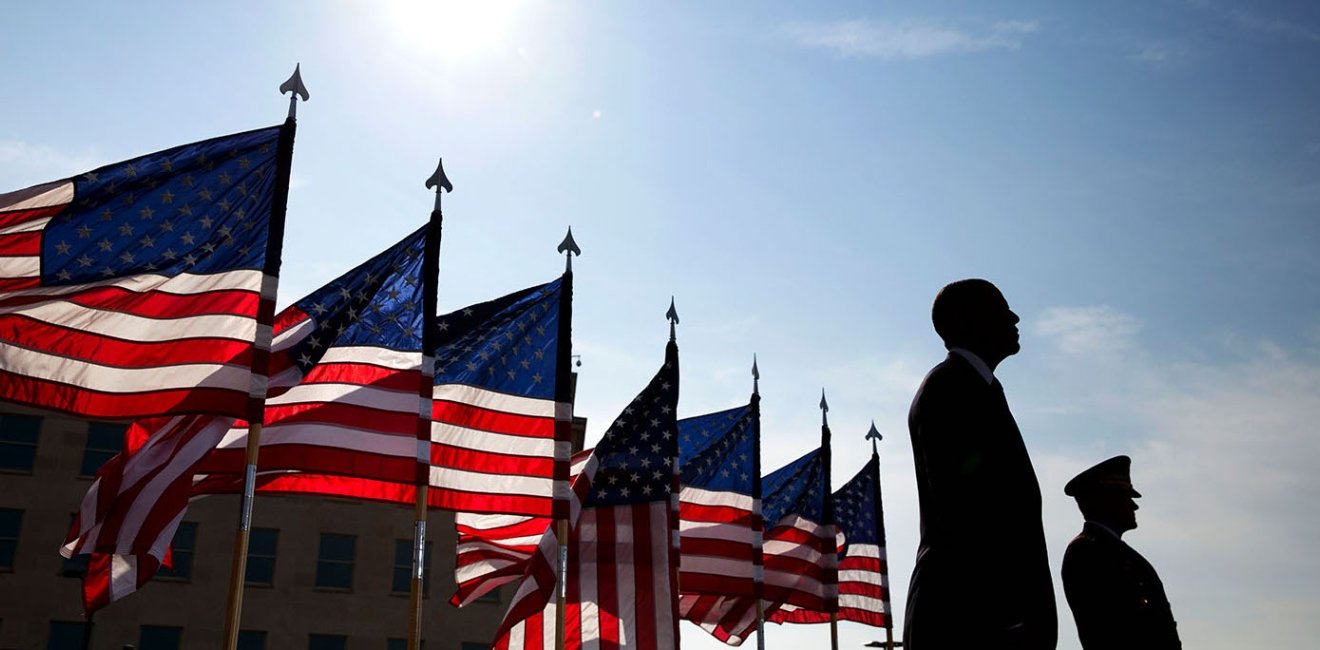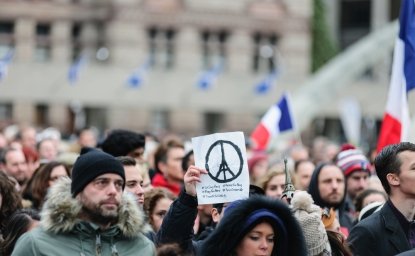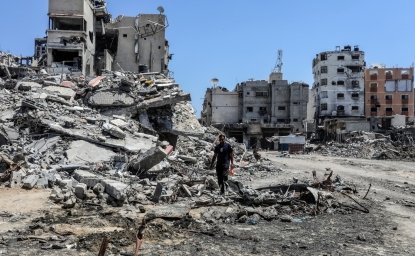In the wake of the mass-casualty terrorist attack by ISIS in Paris on November 13, President Barack Obama has rebuffed calls for a fundamental shift in U.S. strategy toward the Islamic State. At a press conference in Turkey after the G20 meeting of the world’s major economies, Obama explicitly ruled out putting U.S. boots on the ground to destroy ISIS. “We have the right strategy,” he declared, “and we’re going to see it through.”
Administration critics seized on a comment the president made on the eve of the attack—that ISIS had been territorially “contained” in Syria and Iraq—as a weakening of its previously stated objective to “degrade and destroy” the Islamic State. This confusion over U.S. strategy, containment versus rollback, is a reflection of the strategy’s inherent contradictions. These contradictions—policy tensions related to the efficacy of a U.S. military intervention in the Middle East and the capabilities and interests of America’s ostensible allies in the war against ISIS—were evident before the Paris attacks. Then, as now, they can be managed but not resolved.
President Obama, who campaigned as the antiwar candidate in 2008 on a platform to extricate the United States from intractable ground wars in Iraq and Afghanistan, was ironically drawn into a third war midway through his second term. This conflict, a regional sectarian war between Sunni and Shia, is a modern-day Thirty Years War.
When Obama assumed the presidency in 2009, the geostrategic position of the United States was similar to that in the early 1970s as U.S. involvement in the Vietnam War was winding down. A war-weary nation (recall presidential candidate George McGovern’s slogan “Come home, America”) wanted a less activist U.S. foreign policy. The Nixon Doctrine sought to facilitate American geostrategic retrenchment while preserving U.S. interests in vital regions. Central to this strategy was the nurturing of effective allies who could assume greater responsibility for regional security as the United States disengaged. The Obama administration has pursued a variant of the Nixon Doctrine through its efforts to stand up effective armies in Iraq and Afghanistan as the U.S. military stands down, transfers security responsibilities to local forces, and reduces its military footprint in the Middle East. Yet this neo-Nixon Doctrine has been confounded by the inadequate capabilities and contradictory interests of America’s regional partners.
This conflict, a regional sectarian war between Sunni and Shia, is a modern-day Thirty Years War.
In Iraq and Afghanistan, the United States invested billions to build effective national armies, only to see them founder when put to the test. When ISIS began its offensive in central and northern Iraq in 2014, the Iraqi army fled the battlefield, allowing the country’s second-largest city, Mosul, to fall and abandoning their equipment. Military expert Barry Posen, an MIT professor and former Wilson Center fellow, offered a brutal assessment: “The most important fact revealed by ISIS’s victory is that the ‘Iraqi Army’ no longer exists…. [T]he U.S. military is now trying to build another one, from the ground up. Why will things turn out better this time?” A telling indicator of this sorry state, as Boston University professor Andrew Bacevich observed, was the announcement that the United States was shipping 2,000 anti-tank weapons to Iraq for use against American up-armored Humvees that the Iraqi army had left behind in Mosul and which ISIS has now been using as its suicide “vehicle of choice.”
The failure to build up effective indigenous military forces in Iraq have been likewise evident in Syria, where the United States belatedly sought to arm the Syrian “moderate” opposition in their twin fight against ISIS and the Assad regime. President Obama himself was not sanguine about the prospects: “Very early in this process [in 2013],” he told the New York Times, “I actually asked the C.I.A. to analyze examples of America financing and supplying arms to an insurgency in a country that actually worked out well. And they couldn’t come up with much.”
The inadequate capabilities of America’s local partners are compounded by their diverging interests. For virtually none of the United States’ regional partners is ISIS the primary security concern: for Turkey, it is the Kurds; for Saudi Arabia and Qatar, it is the Assad regime and efforts to counter the influence of Iran and its pro-Iranian client in Baghdad; for Iran, it is bolstering the Assad regime.
Like 9/11, the Paris attacks may have a galvanizing effect on the international community. The mutuality of interests in addressing the threat to international order posed by ISIS prompted one observer to describe the G20 meeting as more of a war council than an economic summit. This latest terrorist attack was low tech and carried out, at least in part, by French and Belgian nationals. But a concern is what further attacks the Islamic State might be able to mount given its control of territory (as in its continued occupation of Mosul) that confers the attributes of an actual state.
After 9/11, the United States led the coalition to topple the Taliban regime in Afghanistan because it had permitted al-Qaeda to use that country as a base to mount a horrific terrorist attack. Afghanistan then was not a state sponsor of terrorism; it was a terrorist-sponsored state. The circumstances on the ground with ISIS differ significantly, but the importance of denying ISIS the capabilities of a state is the same. In his G20 press conference, Obama, noting that the territory under ISIS control had actually shrunk, asserted that “the more we shrink that territory, the less they can pretend that they are somehow a functioning state, and the more it becomes apparent that they are simply a network of killers who are brutalizing local populations. That allows us to reduce the flow of foreign fighters, which then, over time, will lessen the numbers of terrorists who can potentially carry out terrible acts like they did in Paris.”
The Paris attacks were not a game changer for U.S. strategy. The fundamentals remain the same, but are being intensified. Whether the core contradictions evident before November 13 can be overcome in this new political environment remains to be seen. One concrete result of the G20 meeting was a renewed commitment to a diplomatic resolution of the Syrian civil war—but ultimately, that means taking on ISIS. And, on that subject, President Obama has ruled out U.S. boots on the ground. U.S. forces could, the president said, march into ISIS strongholds such as Mosul or Raqaa, but “if you do not have local populations that are committed to inclusive governance and who are pushing back against ideological extremes, that they resurface—unless we’re prepared to have a permanent occupation of these countries.” Undergirding the Obama strategy is a view of agency in history—and that, in the Middle East, external intervention is perceived to be neither legitimate nor durable without indigenous support.
The opinions expressed here are solely those of the author.







